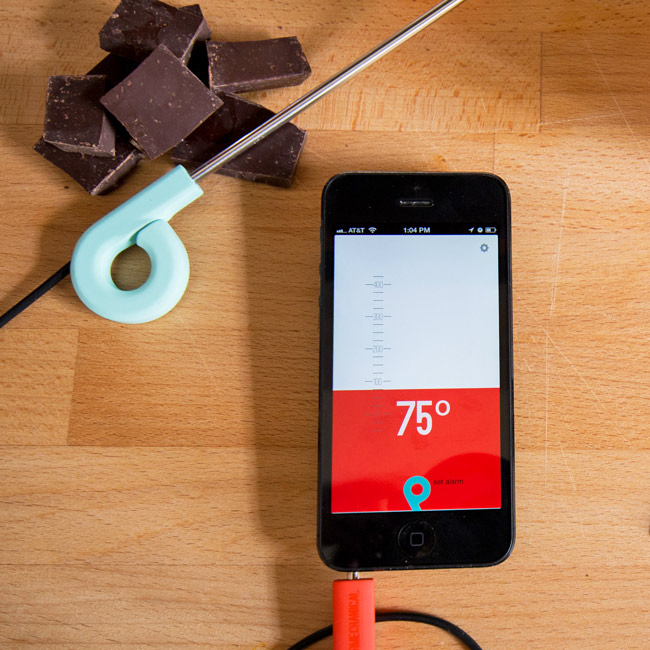John Kestner
A leading interactive technologist uniting digital and physical design

Among the dystopian visions of a Matrix-style digital future, interaction designer John Kestner comes as a welcome voice, “enhancing the successful physical interfaces between humans and objects.” The graduate and research affiliate of M.I.T. Media Lab, along with fellow grad David Carr, runs Supermechanical, a studio devoted to relating old-world craftsmanship with modern technology, in essence, giving electronics some soul. “When each object has an API—a vocabulary—we can get them to listen and respond to other objects,” Kestner explains. “The goal of all this object chatter is to help our devices understand our needs and reduce the information overload in our own lives.”
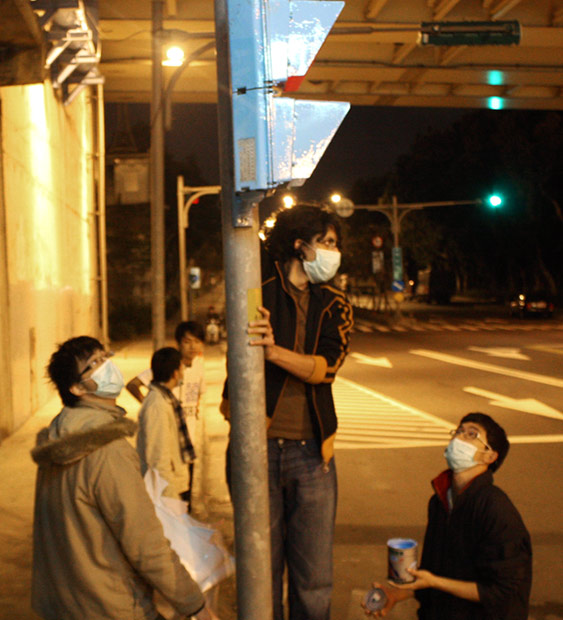
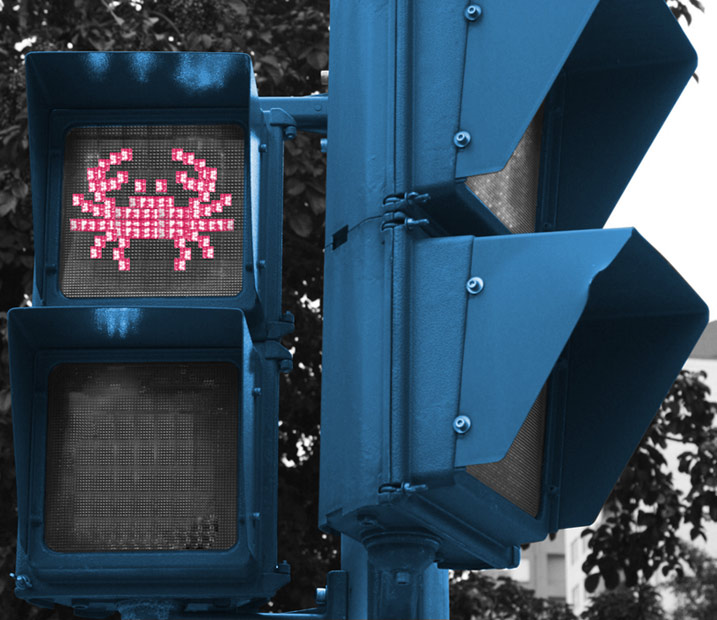
Turning digital excess into everyday accessibility has been the main creative challenge driving Kestner, resulting in products that are both highly useful as well as philosophically clever. When Taipei’s Keelung River was rerouted for flooding purposes, Kestner and a team of architects and urban planners came up with an idea for
a public art installation along its old path using ultraviolet paints and electronics. Modified signs and QR stickers “encoded with poetic and cryptic messages” informed and reminded citizens of the Dazhi district about life along the river.
Kestner’s aptitude for these type of interventions is rivaled only by his wit, with puns playing heavily into the functionality of his work. Two standout examples are “My Ears Are Burning,” an ambient accessory that heats up when the user is being scoped out online, and his Goldilocks of gadgetry—the Proverbial Wallet series—three styles of interactive wallets that are “just right” for each spending habit.
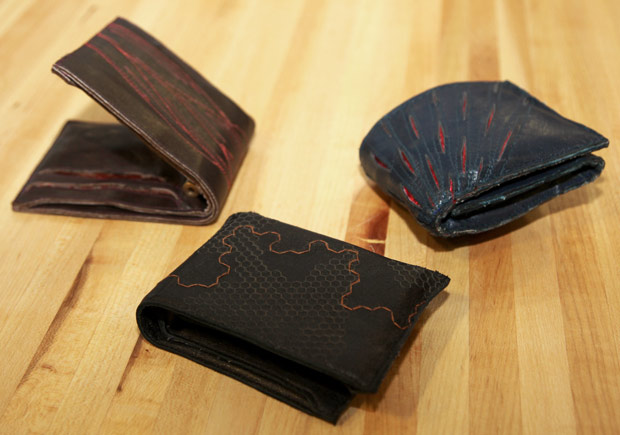
Created in collaboration with fellow MIT alum Daniel Leithinger and Jaekyung Jung, each wallet—Peacock (grows and shrinks based on account balances), Mother Bear (physically clamps up when cash is low) and Bumblebee (buzzes to alert bank transactions)—is “meant to teach a fiscal lesson by evoking Aesop’s-like characters, because you don’t want to be lectured by your objects.” The digital accessories are engraved, laser cut and then individually embroidered by hand.
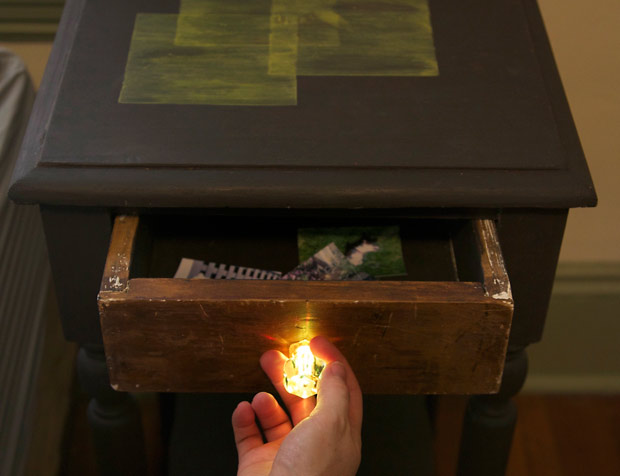
Kestner often puts such technological twists to common objects by adding a touch of chrome to artisinal craftsmanship. Inspired by digitally-challenged correspondence with a great aunt, Kestner created Tableau, a nightstand that scans and transmits media to a Twitter feed. When the furniture receives a message, the drawer knob lights up indicating the printed memento awaiting inside. Constructed from reclaimed material, Tableau suggests a future for repurposing electronics. “I’m hopeful that once we focus on meeting emotional needs, we won’t throw out electronics just to upgrade specs,” the technologist hopes, reflectively adding, “Your computer is a masterwork of humanity.”
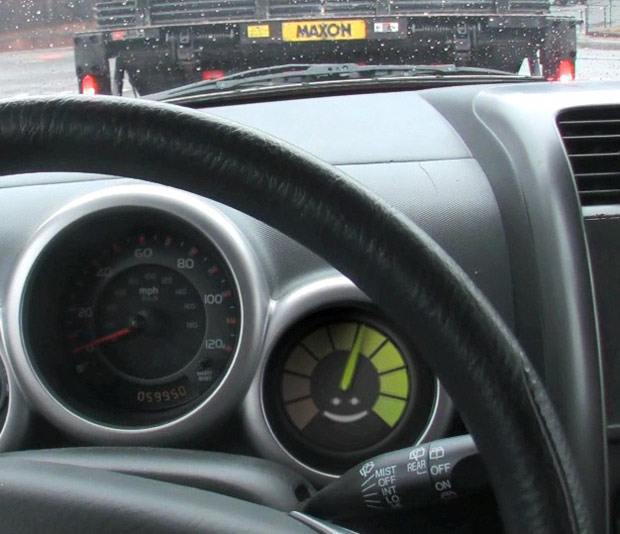

This thoughtful approach leads Kestner beyond simply merging the digital and physical as tactile metaphors. He also envisions supermechanical objects as extensions of social behavior, like with his Social Car interface for Zipcar, which personifies the consequences of a late rental car return and plays on Zipcar’s model of naming their cars. The Social Car assigns each vehicle its own personal Twitter feed to relay updates that drivers can interface through the kitsch intermediary, a dashboard hula girl.
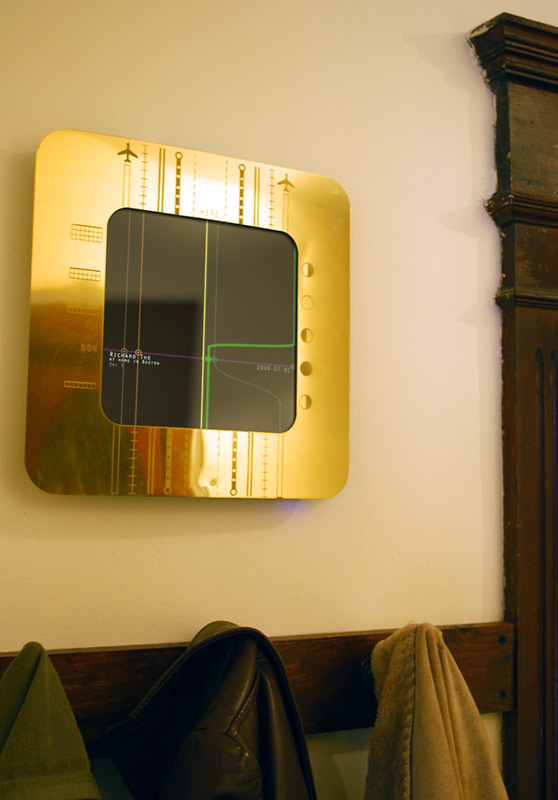

Kestner also created the Proximeter, a device that “tracks the past and future proximity of one’s social cloud,” allowing users to see how close their friends are to their current location. Based on a brass sundial, Kestner designed the “sculptural Foursquare” to visually communicate being at the center of a social hub. Kestner elaborates, “There’s enough intelligence to foster serendipity, and no more,” explaining the experience as, “poetic in the way you can see people tracing out a path relative to you through time and space.”
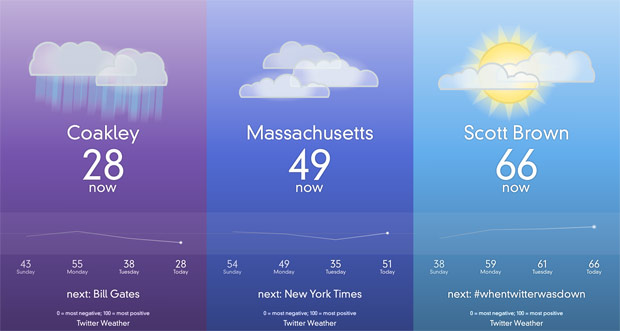
Pioneering the shift in technological design, Supermechanical will release a commercial iteration of Tableau as well as kits to turn an obsolete iOS device into a Proximeter. Kestner states, “Content is easy to generate, and metadata is more important. It’s not what we say, but when and how. I want to anchor our progress in the human need, and that need is both functional and emotional.” Spoken like a true interactive designer.
The Audi Icons series, inspired by the all-new Audi A7, showcases 16 leading figures united by their dedication to innovation and design.

